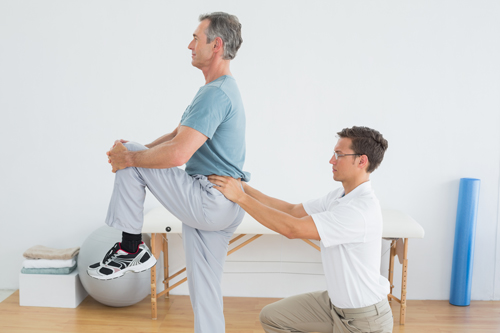
You lifted a bag of groceries from the floor. Now your physician says your back pain is the result of spinal compression fracture. What is that? Can it be treated? Will the pain go away?
Spinal compression fracture occurs when bones of the back cannot support the demand placed on them and collapse. Sometimes multiple or untreated fractures may lead to a hunchback deformity, loss of height, and even stomach or breathing problems from the compression of internal organs caused by the shrinking spine.
Sudden trauma, for instance, when lifting a heavy suitcase or turning a mattress, can cause spinal compression fracture. Osteoporosis, a gradual thinning of the bones, particularly in women older than 50, is another possible cause, weakening the spine until it can no longer withstand the demands of even routine daily activity.
Symptoms range widely from sudden, severe pain, usually in the mid-back, to a dull ache that worsens when standing, walking, bending or twisting. In some cases, there is no pain at all, and the fracture goes undetected until the back is examined or x-rayed for some other reason.
Most compression fractures respond well to conservative treatment. Treatment usually begins with a few days of rest from physical activity and medication to relieve the pain during healing. Wearing a back brace may be advised if you need the support.
We may recommend weight-bearing exercises such as walking to maintain bone density and range-of-motion exercises for your back, neck, shoulders and hips. Increasing your calcium intake to maintain bone strength can also be helpful. We will also teach you proper body mechanics to keep your back in safe positions when moving and to avoid extra strain near the fracture as you go about your work and daily activities.
With appropriate therapy, most compression fractures heal in about 8 to 10 weeks. As you recover, exercises will extend your range of motion and strengthen the abdominal muscles that support the spine, and the back muscles that resist the forward bending of the spine. After the recovery period, we can work with you to design a diet, exercise and lifestyle plan that can protect your spinal health and help avoid future fractures.









